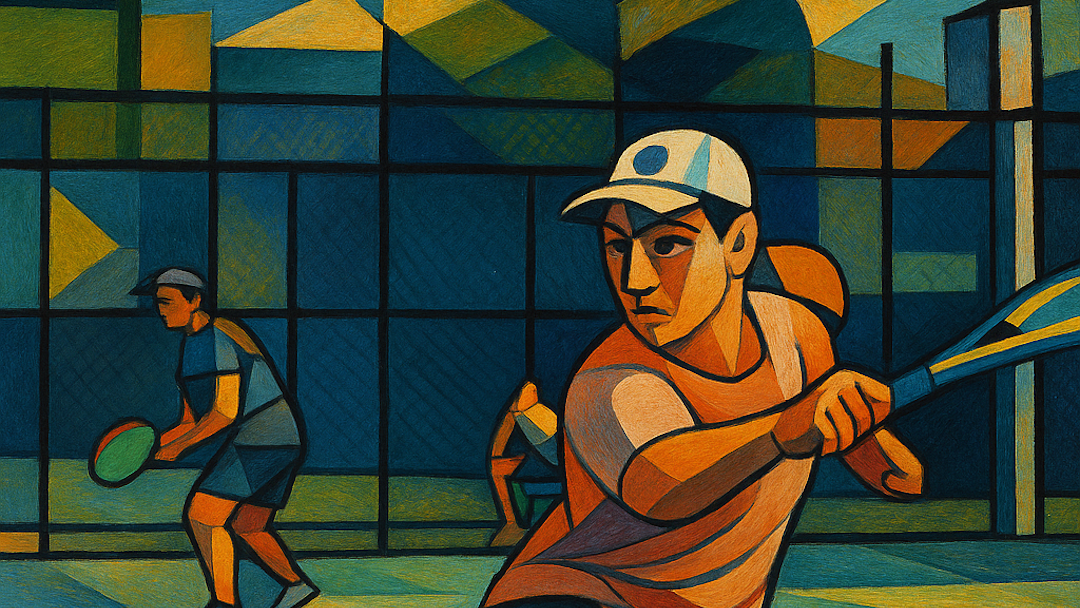Guillermo Vilas was the second player to win more than 900 professional tennis matches during the Open Era. Overall, he won 62 ATP championships and four major singles titles. That included the Australian Open in 1978 and 1979. He also won the French and US Opens in 1977. Somehow, he never appeared at the top of the ATP rankings and became known as the perpetual #2. That fact is one of the greatest travesties in the history of tennis.
Guillermo Vilas: Settling the Score is a Netflix documentary released in 2020. It features tennis history and artistically appealing photos and video clips. It also has a healthy dose of mystery, math, rabbit trails, and rankings point calculation controversy. I was destined to love this film.
There are two narrative arcs in Settling the Score. The first traces the story of Vilas’s tennis career both on and off court. It is clear why he was one of the most popular and celebrated players of his era. The other story in the documentary was that of Argentinian tennis journalist Eduardo Puppo who believed that Vilas was in fact #1 at some point. He was determined to find out for sure.
In 2007, the WTA revised the women’s tour rankings to add matches that were inadvertently omitted from the calculations from the 1970s. One beneficiary of that change was Evonne Goolagong Cawley, who was retroactively declared to have reached the #1 spot for two weeks in 1976. Reading about that sparked Puppo’s quest to determine if a similar error had denied Vilas from topping the ATP Tour rankings.
The journalist set out to recalculate the ATP tour rankings from 1973 through 1978. During those years, the ATP had performed the rankings calculations manually. Additionally the method was a complicated averaging of each player’s results. That meant that by playing more events, as Vilas did during those years, the impact of his top performances was diluted.
Puppo’s search for evidence of rankings calculation errors was a complicated journey of collecting all the results and also performing his own calculations by hand. It was a tedious and frustrating endeavor that took twelve years. He quit twice and never found what he was looking for on his own.
Eventually Puppo collaborated with a Romanian mathematician, Marian Ciulpan who reframed the problem from a different perspective. Due to the manual nature of the calculations, the ATP didn’t publish the rankings each week. In fact, the list was published only 13 times in 1975. The “error” in the rankings that Puppo was looking for wasn’t a miscalculation but rather one of omission.
Had the ATP published weekly rankings in the early 1970s, Vilas would have been ranked #1 for five weeks beginning on September 22 1975, and for the first two weeks of 1976. Since that doesn’t involve changing the rankings system in any way other than just calculating and publishing it each week, it would seem to be fairly non-controversial to recognize Vilas for his achievement.
It was not meant to be.
Puppo’s documentation was provided to the ATP, but the organization ultimately decided against any retroactive adjustment for Vilas. The rationale for that decision is that if his request was acknowledged other players might come out of the woodwork with additional rankings claims. I fail to see how correcting errors in history is a bad thing.
In any case, Guillermo Vilas: Settling the Score is a thoroughly entertaining biopic of the tennis legend. It is also a fascinating look at the legacy ATP rankings system. Serious tennis fans should check it out. (Or at least the trailer.)
 | Guillermo Vilas: Settling the Score a Netflix Film |
- Years Later for Guillermo Vilas, He’s Still Not the One, Christopher Clarey, The New York Times, May 25, 2015.




Puppo did a great work. It’s a question about justice and truth. But the institutions are still struggling to recognize errors. In this case it’s really shameful. Vilas was number 1. Now everyone knows that fact … except ATP.
This is a unique tennis documentary delving into the obsession of being recognized as the very best at the sport. The retrospective on Vilas’ career and the current day interactions with him are especially memorable. Contrasted with Connors, the audience cannot help but view Vilas as a sympathetic character. Good stuff.